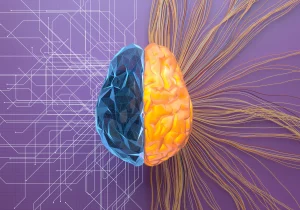What is Conversational AI?
Conversational AI is the technology that allows us to sustain more human-like dialogue with computers. It’s what enables Siri to respond to our requests for weather updates and Alexa to tell us a joke. But it’s a lot more than one thing. In reality, it’s a group of artificial intelligence technologies that come together to allow computers to understand and respond to human language in a more natural and engaging way.
Conversational AI Glossary of Terms
Several subsets of artificial intelligence are needed to train a computer to decipher human language and respond appropriately, accurately and autonomously. So, the simplest way to answer what is conversational AI, is to introduce the key types of AI technology that enhance human dialogue with computers.
We will update this page periodically.
1. NLP – Natural Language Processing
NLP is the arm of artificial intelligence that gives computers the ability to take your words and use them to spark a natural dialogue that leads to a satisfying outcome. In short, it’s what allows conversational AI technology to ingest, interpret and understand human language. For example, by taking cues from the linguistic patterns of your phrases, Alana can figure out what you’re trying to communicate. This is a crucial first step in delivering engaging and relevant responses.
2. NLU – Natural Language Understanding
This is a specific area of NLP that zones in on translating the intent behind your words. Alana uses NLU to appreciate context, detect sentiment, understand patterns of speech and even recall previous conversations. This allows Alana conversational AI to accurately interpret what you’re aiming to achieve from a dialogue, no matter how you choose to specifically word a command or phrase.
3. Machine learning
NLP and NLU give Alana the ability to recognise and understand human language. But how does it know how to respond? This is where machine learning steps up. In general terms, machine learning allows Alana to choose how to behave and respond based on a combination of data and experience. It also allows the decisions and predictions a conversational AI assistant makes to get progressively more accurate over time. This more automatic and autonomous use of data removes the necessity to specifically programme every response, reducing the amount of human intervention needed.
4. Deep learning
This describes a more advanced, ‘unsupervised’ machine learning model. Rather than relying on rules input by humans, deep learning technology uses its own reasoning to make decisions. This logic is informed by multiple layers of algorithms that create an artificial neural network that imitates the human brain. Consequently, conversational AI based in deep learning needs less guidance and correction from humans to deliver pleasing and accurate responses.
Conversational AI vs chatbots – what’s the difference?
The big difference between chatbots and conversational AI is how extensively these AI technologies are applied. Standard chatbots typically rely on scripted responses written by humans behind the scenes, rather than advanced applications of artificial intelligence. As a result, chatbot conversations are driven by pre-written rules. This tends to construct less natural dialogue and responses are limited to matches found in its library.
Conversational AI has the capability to not only stray off script, but also to reach conclusions autonomously based on context and learned experiences. In short, NLP, NLU, machine learning and deep learning combine to give technologies like Alana a more human-like ability to chat.
Which leads to the question, is it time for you to go off script?



